FAQ - Advanced Bathroom Queries
Do Some Cultures Not Flush the Toilet

Have you ever thought about the reasons why certain cultures choose not to flush their toilets? It’s an intriguing inquiry that explores the complexities of cultural norms and human conduct.
In this article, we will embark on a journey of exploration, uncovering the historical origins, cultural variations, and societal norms surrounding toilet flushing.
Join us as we dive into this in-depth analysis, providing you with a cross-cultural comparison and historical context.
It’s time to unravel the mysteries behind this intriguing phenomenon.

Key Takeaways
- Toilet flushing customs have historical origins and cultural variations, reflecting values and beliefs surrounding cleanliness and hygiene.
- Different cultures have varied attitudes and practices towards waste disposal and cleanliness, including the use of squat toilets, bidets, toilet paper, and water and the left hand.
- Water conservation is an important global concern, and cultural attitudes towards waste impact water conservation practices.
- Infrastructure limitations and lack of access to proper sanitation contribute to the adoption of alternative waste disposal methods, highlighting the importance of proper sanitation systems for public health and disease prevention.
Historical Origins of Toilet Flushing Customs
In our exploration of the historical origins of toilet flushing customs, we’ll delve into the fascinating ways in which different cultures have developed and implemented methods for disposing of waste.
The origins of toilet flushing customs can be traced back to ancient civilizations such as the Indus Valley civilization, where the concept of sanitation and waste management was already well established. Over time, these customs evolved and adapted to the cultural and technological advancements of each society.
For example, the Romans developed complex sewer systems and public toilets, while the Chinese invented the first flush toilet using water pressure. This evolution of toilet flushing customs reflects not only the practical need for waste disposal but also the cultural values and beliefs surrounding cleanliness and hygiene.
Cultural Variations in Toilet Etiquette
When examining cultural variations in toilet etiquette, it becomes evident that flushing customs differ worldwide. Certain cultures prioritize water conservation and have implemented systems that use less water for flushing, while others emphasize hygiene and have advanced technologies in place.
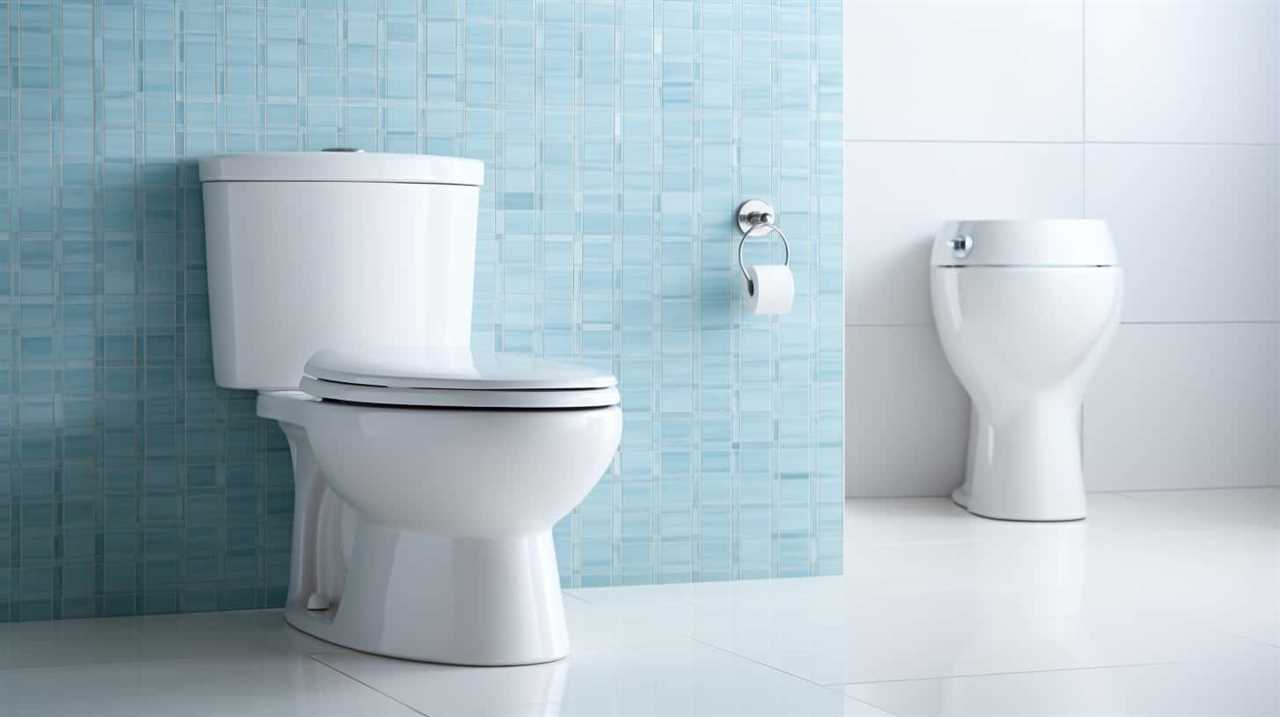
These variations can be attributed to historical, environmental, and societal factors, highlighting the importance of considering cultural context when discussing toilet etiquette. By understanding these diverse practices, we can foster a more inclusive and informed approach to hygiene worldwide.
Flushing Customs Worldwide
We have noticed that toilet flushing customs vary across cultures, showcasing a fascinating range of toilet etiquette practices worldwide. Understanding these cultural variations provides an in-depth analysis of how different societies approach toilet hygiene and bathroom habits.
In some cultures, flushing the toilet is considered a necessary act of cleanliness. It’s seen as a way to maintain proper sanitation and hygiene. On the other hand, there are cultures where flushing the toilet isn’t as common, and instead, other methods are used to dispose of waste.
These variations can be attributed to historical and cultural factors. For example, in countries with limited access to water, such as certain parts of Africa and Asia, flushing toilets may not be practical due to water scarcity. Instead, alternative methods like pit latrines or bucket systems are used.

Hygiene Practices Across Cultures
Our understanding of hygiene practices across cultures is enriched by exploring the cultural variations in toilet etiquette. Toilet hygiene is influenced by cultural practices and beliefs, which can vary greatly from one society to another. To illustrate this, let’s take a closer look at some cultural influences on toilet hygiene in different parts of the world:
| Cultural Influence | Toilet Hygiene Practices |
|---|---|
| Eastern Asia | Squat toilets are commonly used and toilet paper is rare. |
| Middle East | The left hand is considered unclean, so water and bidets are used for cleansing. |
| Western Europe | Toilet paper is the most common method of cleaning. |
| South Asia | Water and the left hand are used for cleaning. |
| North America and Australia | Toilet paper is used for cleaning. |
Understanding these cultural variations in toilet etiquette allows us to appreciate the diversity of hygiene practices and offers valuable insights into the historical and social contexts that shape them. Through cross-cultural comparisons, we can gain a deeper understanding of the significance of toilet hygiene in different societies.
Hygiene Beliefs and Practices
When it comes to hygiene beliefs and practices, different cultures have varied attitudes towards waste disposal and cleanliness. Taboos around waste disposal can be deeply ingrained in certain cultures, influencing their approach to toilet etiquette and hygiene.
Additionally, cultural variations in hygiene practices can be observed, with different societies having unique rituals and customs related to cleanliness. Understanding these variations requires an in-depth analysis of cross-cultural comparisons and historical context.
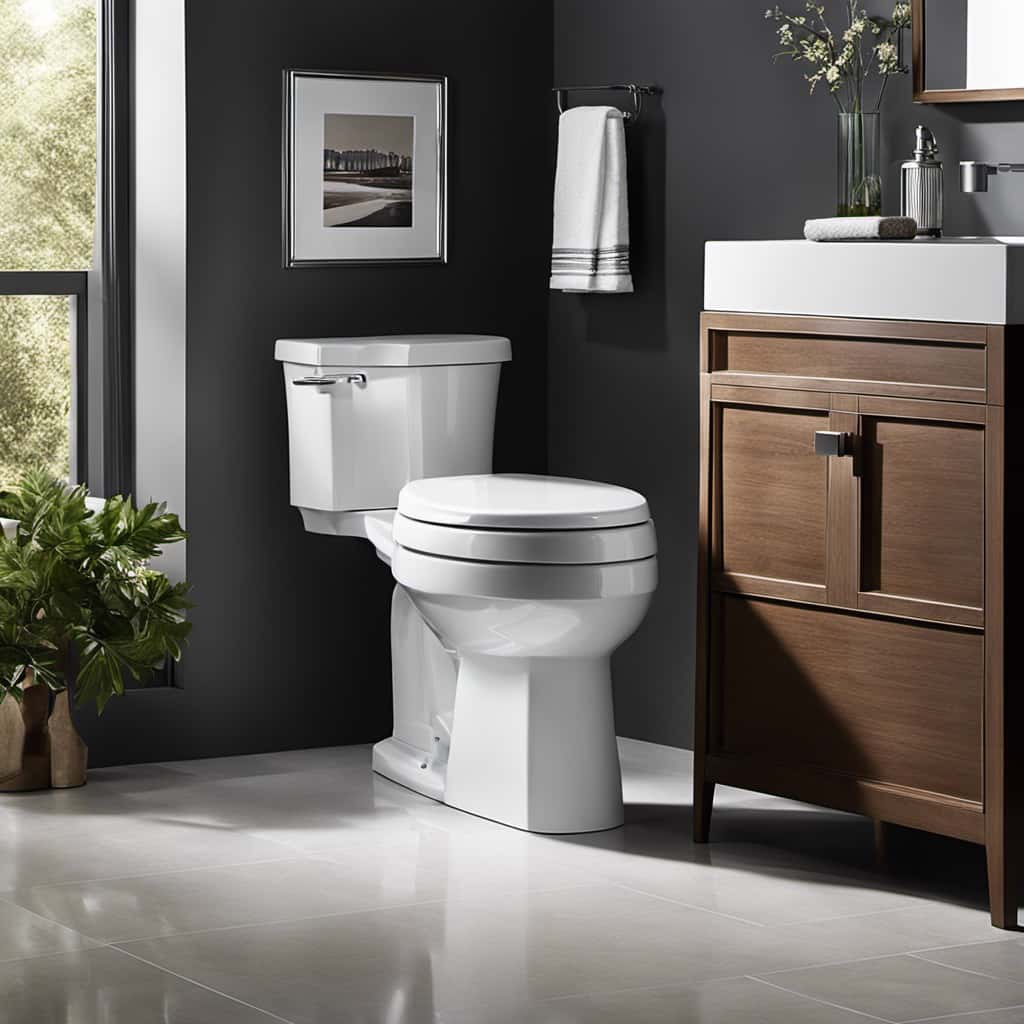
Taboo Around Waste Disposal
The cultural practices surrounding waste disposal vary widely, reflecting differing hygiene beliefs and practices. Taboos around waste disposal can be found in various cultures, and these taboos often stem from cultural influences and historical contexts.
In some cultures, waste management practices prioritize cleanliness and the removal of waste as quickly as possible. This is due to the belief that waste is dirty and can spread diseases. On the other hand, in certain cultures, waste disposal may be seen as taboo because it’s associated with impurity or bad luck. These beliefs and practices are deeply ingrained in the cultural fabric and are passed down through generations.
It’s important to understand and respect these cultural differences when discussing waste disposal and hygiene practices globally.
Cultural Variations in Hygiene
Cultures exhibit diverse hygiene practices and beliefs. When it comes to cultural hygiene practices, there are significant variations around the world. One area where these differences are particularly evident is in cross-cultural toilet habits. Here are three key points to consider:
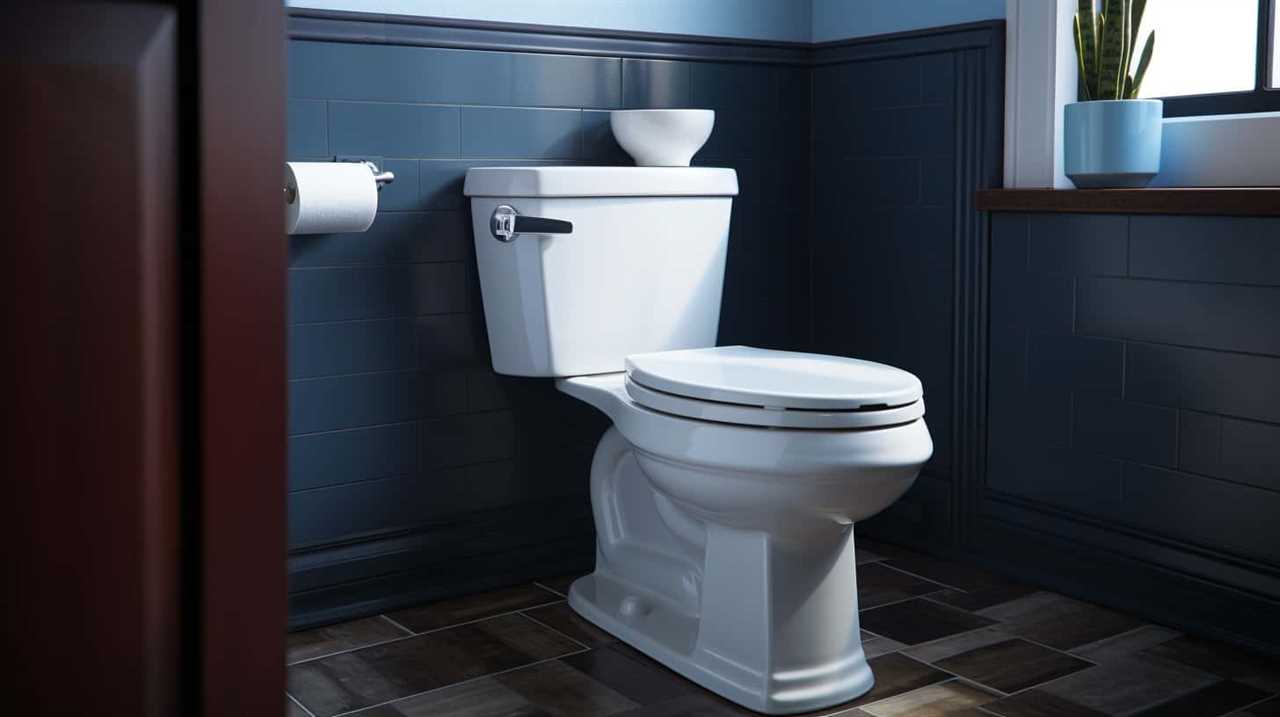
- Toilet etiquette: Different cultures have distinct norms and expectations regarding toilet hygiene. For example, in some cultures, it’s customary to use water for cleaning after using the toilet, while in others, toilet paper is the preferred method.
- Public facilities: The availability and cleanliness of public toilets vary greatly across cultures. Some societies prioritize maintaining hygienic public restrooms, while others may not have the same level of infrastructure or cultural emphasis on cleanliness.
- Historical context: Cultural hygiene practices are often shaped by historical factors. Traditions and beliefs surrounding cleanliness and sanitation have evolved over time, influenced by factors such as religious beliefs, technological advancements, and cultural norms.
Understanding these cultural variations in hygiene practices can help foster cross-cultural understanding and appreciation for different ways of maintaining cleanliness and sanitation.
Rituals and Cleanliness Practices
In our exploration of hygiene beliefs and practices, we’ll delve into the rituals and cleanliness practices observed across different cultures. Rituals and hygiene practices are deeply embedded in cultural perspectives and serve as a way to maintain cleanliness, promote well-being, and establish social norms.
Across various cultures, rituals associated with hygiene are often performed with great care and significance. For example, in some cultures, handwashing before meals is considered a sacred ritual to purify the body and soul. In other cultures, daily bathing is seen as essential for physical and spiritual cleanliness.
These rituals and practices reflect the historical context and values of each culture, emphasizing the importance of cleanliness and maintaining personal hygiene. By understanding these cultural perspectives, we gain insight into the diverse ways in which societies approach hygiene.
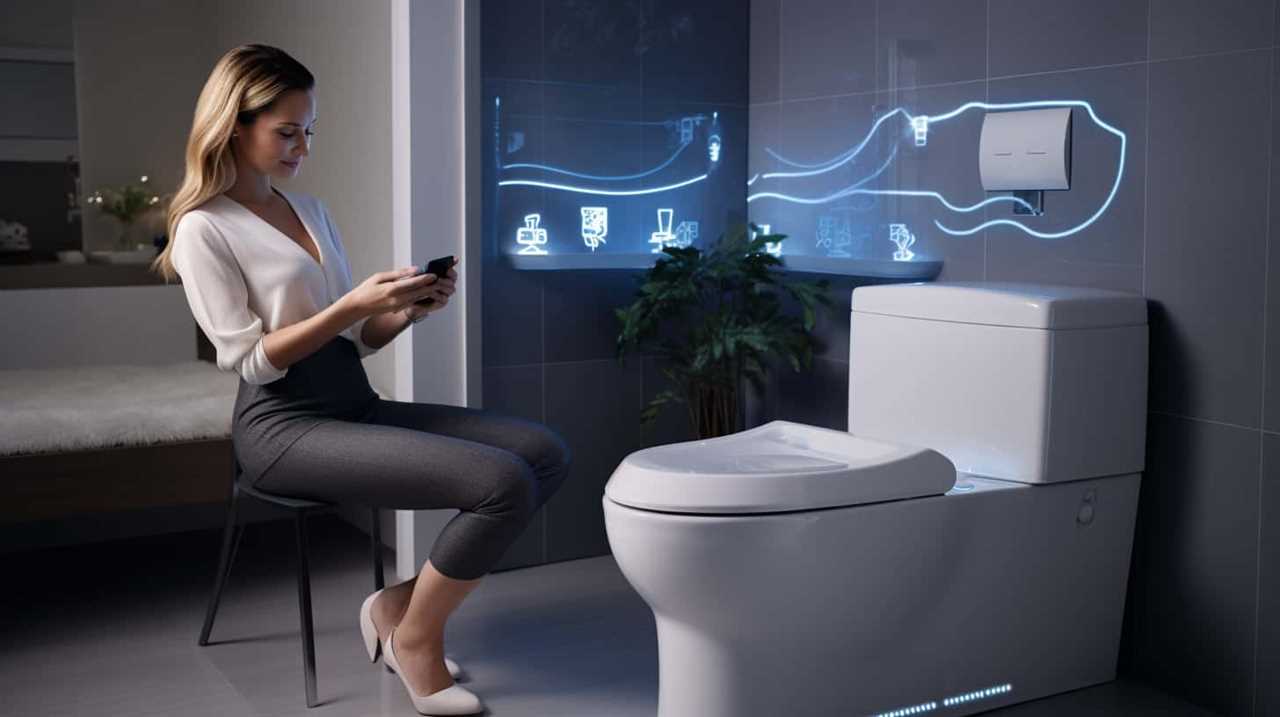
As we transition into the subsequent section about environmental considerations and water conservation, it’s important to recognize how rituals and cleanliness practices also play a role in addressing these concerns.
Environmental Considerations and Water Conservation
As a global community, we must consider environmental impacts and actively conserve water. In the context of toilet technology advancements and cultural attitudes towards waste, it becomes evident that different cultures have varying approaches to water conservation. Here are three important factors to consider:
- Traditional toilet systems: Many older toilets use a significant amount of water per flush, contributing to water wastage. Upgrading to more efficient toilets can significantly reduce water consumption.
- Cultural practices: Some cultures have traditional practices that discourage flushing after every use, aiming to conserve water. These practices can be traced back to historical or geographical factors, such as water scarcity or the use of alternative waste disposal methods.
- Education and awareness: Promoting education about environmental sustainability and the importance of water conservation can help change cultural attitudes towards waste and encourage individuals to adopt more water-efficient behaviors.
Taboos and Superstitions Surrounding Toilet Flushing
Continuing from our previous discussion on water conservation, let’s delve into the intriguing taboos and superstitions surrounding toilet flushing. Across different cultures, there are various beliefs and practices surrounding this everyday act.
For instance, in some cultures, it’s considered bad luck to flush the toilet at night, as it’s believed to wash away good fortune. In others, there are specific rituals associated with flushing, such as saying a prayer or making a wish.

Additionally, some cultures have alternative methods to toilet paper, using water or other materials for cleansing. Public restroom etiquette also plays a significant role in these taboos, as certain behaviors are deemed disrespectful or unclean.
Understanding these cultural nuances and historical contexts can provide valuable insights into the diverse ways in which different societies approach something as seemingly mundane as flushing a toilet.
Infrastructure Limitations and Lack of Access to Proper Sanitation
Despite challenges in infrastructure and limited access to proper sanitation, some cultures have developed alternative methods for waste disposal. These alternative methods are born out of necessity, as communities face infrastructure challenges that prevent the establishment of proper sanitation systems. In some areas, the lack of resources and funding has hindered the construction of sewage networks and treatment plants. As a result, communities have had to find innovative solutions to address their sanitation needs.
- Pit latrines: These simple structures consist of a hole in the ground, covered with a concrete slab or wooden platform. They’re cost-effective and can be easily constructed in areas with limited resources.
- Composting toilets: These systems convert human waste into compost, which can be used as fertilizer. They’re particularly useful in rural areas where access to water and sewage systems is limited.
- Community-led initiatives: In some cultures, communities have taken the initiative to create their own sanitation solutions, such as building communal latrines or establishing waste management programs.
While these alternatives help address the immediate need for waste disposal, they can also pose public health concerns. Improperly managed waste can contaminate water sources, leading to the spread of diseases. Therefore, it’s crucial for communities facing infrastructure limitations to prioritize the development of sustainable and hygienic sanitation systems.

Societal Norms and Social Expectations
In our society, the act of flushing the toilet is considered a common and expected practice. However, cultural norms and bathroom etiquette vary across different societies and can influence how people perceive and engage with toilet flushing.
To understand why some cultures may not prioritize flushing the toilet, we must analyze the historical and cross-cultural context. In some cultures, water scarcity or limited access to plumbing infrastructure may contribute to a lack of emphasis on flushing.
Additionally, different cultural norms surrounding cleanliness and privacy may shape societal expectations around bathroom behavior. It’s important to approach this topic with sensitivity and respect, recognizing that what may seem like a basic societal norm to us may hold different meanings and values in other cultures.
Impact of Globalization on Toilet Flushing Habits
Our observation of toilet flushing habits across various cultures suggests that a significant number of people have adopted a more hygienic approach due to increased exposure to global standards. Globalization’s impact on toilet flushing habits has been profound, with cross-cultural influences leading to changes in bathroom etiquette practices worldwide.
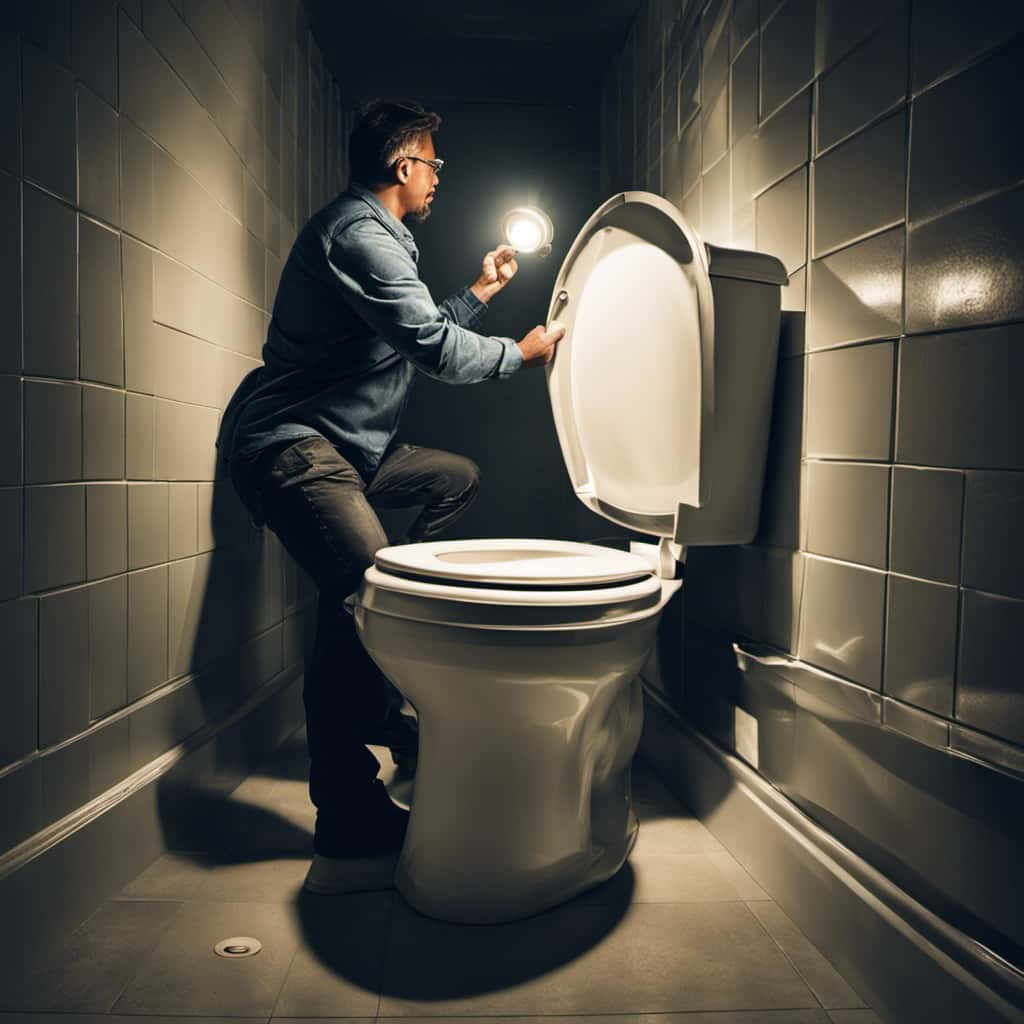
- Increased travel and migration have facilitated the exchange of ideas and practices, leading to the adoption of more hygienic toilet flushing habits in different cultures.
- The spread of Western hygiene norms through media and international organizations has played a significant role in shaping toilet flushing behaviors around the world.
- Globalization has also brought about improvements in sanitation infrastructure, making it easier for people to adopt hygienic practices.
These cross-cultural influences haven’t only improved public health but have also contributed to a more standardized approach to toilet flushing across different societies.
As globalization continues to connect people and cultures, the impact on toilet flushing habits is likely to persist and evolve.
Conclusion
In conclusion, it’s fascinating to explore the various reasons why some cultures may have different toilet flushing customs.
From historical origins and cultural variations to hygiene beliefs and environmental considerations, these factors shape societal norms and expectations.

Taboos and superstitions also play a role, while infrastructure limitations and lack of access to proper sanitation further contribute to these differences.
As globalization continues to impact our world, it will be interesting to see how toilet flushing habits evolve and adapt.
With an impeccable eye for detail and a passion for bathroom-related, Ava leads our editorial team gracefully and precisely.
Under her guidance, Best Modern Toilet has flourished as the go-to resource for modern bathroom enthusiasts. In her free time, you might find Ava exploring antique shops and looking for vintage bathroom fixtures to add to her collection.
FAQ - Advanced Bathroom Queries
Where Can You Not Flush Toilet Paper

We’ve all experienced it – facing a toilet, pondering whether we should flush that bundle of toilet paper or not.
Well, here’s a surprising fact: in some places, you can’t flush it at all! From public restrooms to older plumbing systems, there are several situations where tossing that tissue down the drain is a big no-no.
In this article, we’ll explore where you can and can’t flush toilet paper, so you never find yourself in a messy situation again.
Key Takeaways
- Flushing toilet paper in public restrooms can have severe environmental impacts, clog pipes, and strain wastewater treatment facilities.
- Older plumbing systems may not be able to handle flushing toilet paper, leading to clogging and backups in the pipes.
- Many countries with inadequate sewage infrastructure cannot handle flushing toilet paper, leading to clogged pipes, sewage backups, and contaminated water sources.
- Flushing non-biodegradable items can cause blockages in septic systems and disrupt the natural balance of the tank, so it is important to use waste bins and properly dispose of hazardous materials.
Public Restrooms
In public restrooms, it’s important to remember that toilet paper shouldn’t be flushed in certain situations. Proper hygiene practices in public restrooms require us to dispose of toilet paper appropriately. Flushing toilet paper may seem convenient, but it can have severe environmental impacts.

When flushed, toilet paper can clog pipes and sewage systems, causing costly repairs and potential health hazards. Additionally, flushing toilet paper contributes to water pollution and strain on wastewater treatment facilities. By not flushing toilet paper in public restrooms, we can help conserve water, reduce maintenance costs, and protect the environment.
Instead, it’s recommended to use the provided waste bins for proper disposal. Let’s all be mindful of our actions and practice responsible hygiene practices in public restrooms for the benefit of ourselves and the environment.
Older Plumbing Systems
Our older plumbing systems may not be able to handle the flushing of toilet paper. This is due to their historical significance and the environmental impact it can have.
Many older buildings still have outdated plumbing systems that weren’t designed to handle the modern use of toilet paper. These systems were built at a time when people used alternative methods such as bidets or reusable cloths.

Flushing toilet paper in these older systems can lead to clogging and backups in the pipes, causing costly repairs and potential damage to the environment. It’s important to be aware of the limitations of these older plumbing systems and to dispose of toilet paper in the appropriate waste receptacles to prevent any issues.
Countries With Inadequate Sewage Infrastructure
Many countries around the world have inadequate sewage infrastructure that cannot handle the flushing of toilet paper. This poses significant challenges for hygiene practices and has a severe environmental impact. In countries where the sewage infrastructure is inadequate, flushing toilet paper can lead to clogged pipes, sewage backups, and contaminated water sources.
To illustrate the severity of the issue, let’s take a look at the table below, which highlights a few countries facing this problem:
| Country | Hygiene Practices Affected | Environmental Impact |
|---|---|---|
| Haiti | Limited access to clean water and sanitation facilities | Contamination of water sources and increased risk of diseases |
| India | Lack of proper sanitation facilities in rural areas | Pollution of rivers and groundwater |
| Cambodia | Insufficient sewage treatment plants | Water pollution and degradation of ecosystems |
It’s clear that the inadequate sewage infrastructure in these countries not only poses challenges to hygiene practices but also has a detrimental impact on the environment. Efforts should be made to improve and upgrade the sewage systems to ensure proper waste management and protect public health.

Portable Toilets
Moving forward from the discussion on countries with inadequate sewage infrastructure, let’s now explore the topic of portable toilets and their role in addressing the challenges related to proper waste management and hygiene practices.
Portable toilets play a crucial role in providing sanitation solutions in various situations. Here are four key points to consider:
- Temporary Events: Portable toilet rental is essential for outdoor events like concerts, festivals, and sports matches. They ensure that attendees have access to clean and convenient restroom facilities.
- Construction Sites: Portable toilets are commonly used on construction sites where permanent facilities are unavailable. They help maintain proper hygiene practices and ensure the well-being of workers.
- Disaster Relief: During natural disasters or emergencies, portable toilets are vital in providing immediate sanitation solutions in affected areas, preventing the spread of diseases.
- Outdoor Activities: Whether it’s camping, hiking, or boating, portable toilets are essential for maintaining cleanliness and hygiene in remote outdoor locations.
Septic Tanks
Let’s now delve into the topic of septic tanks and their role in addressing waste management and hygiene practices, particularly in relation to portable toilets.
Septic tanks play a crucial role in waste disposal and treatment, providing an efficient and eco-friendly solution for waste management. When it comes to portable toilets, septic tanks are often used to collect and store waste until it can be properly disposed of or treated.

One of the key considerations with septic tanks is their environmental impact. Properly maintained septic tanks can minimize the release of harmful substances into the environment, protecting both human health and ecosystems.
Maintenance requirements for septic tanks include regular pumping, inspection, and proper use of additives to promote the breakdown of organic waste. By adhering to these maintenance practices, septic tanks can effectively manage waste and maintain a healthy environment.
Frequently Asked Questions
How Often Should Public Restrooms Be Cleaned to Ensure Proper Hygiene and Prevent the Spread of Diseases?
We clean public restrooms frequently to maintain proper hygiene and prevent the spread of diseases. Our disease prevention measures include regular cleaning, disinfecting surfaces, and ensuring adequate supply of soap and hand sanitizers.
What Are Some Alternative Options for Disposing of Toilet Paper in Areas With Older Plumbing Systems?
In areas with older plumbing systems, waste disposal can be a challenge. However, there are environmentally friendly alternatives to flushing toilet paper. Let’s explore some options for proper disposal that won’t harm the plumbing.

Can You Provide a List of Countries With the Most Advanced Sewage Infrastructure?
A list of countries with the most advanced sewage infrastructure includes Japan, Germany, and Singapore. These countries have invested in modern technology to efficiently manage wastewater. Bidets are another alternative to toilet paper, with benefits like improved hygiene and reduced environmental waste.
How Are Portable Toilets Emptied and Maintained to Ensure Proper Sanitation?
When it comes to portable toilet maintenance, ensuring proper disposal of waste is crucial. We take the responsibility seriously, employing strict protocols to empty and maintain portable toilets, guaranteeing optimal sanitation for everyone.
What Are the Common Problems That Can Occur With Septic Tanks and How Can They Be Prevented or Resolved?
Common septic tank problems include blockages, leaks, and overflows. Regular septic tank maintenance, such as pumping and inspecting, can help prevent these issues. It’s important to follow proper waste disposal guidelines to avoid further complications.
Conclusion
In conclusion, while it may seem strange to some, there are various places where flushing toilet paper isn’t advisable. Public restrooms, older plumbing systems, countries with inadequate sewage infrastructure, portable toilets, and septic tanks all fall into this category.

It’s crucial to be mindful of these restrictions to prevent clogging and damage to the plumbing systems. So next time you find yourself in one of these situations, remember to dispose of your toilet paper properly and help keep the pipes flowing smoothly.
With an impeccable eye for detail and a passion for bathroom-related, Ava leads our editorial team gracefully and precisely.
Under her guidance, Best Modern Toilet has flourished as the go-to resource for modern bathroom enthusiasts. In her free time, you might find Ava exploring antique shops and looking for vintage bathroom fixtures to add to her collection.
FAQ - Advanced Bathroom Queries
How Do You Flush the Toilet in Italy

If you have ever been in Italy and faced with a confusing toilet, not sure how to flush it, do not worry! We are here to help you navigate the complexities of Italian toilet flushing systems.
In this article, we will provide a step-by-step guide on how to properly flush a toilet in Italy, highlighting common mistakes to avoid and offering tips for using public restrooms.
Prepare to master the art of toilet flushing in Italy with our informative and precise instructions.
Key Takeaways
- In Italy, there are different types of toilets, including traditional flush toilets, dual-flush toilets for water conservation, bidets, squat toilets in public restrooms, and high-tech toilets with advanced features.
- The flushing mechanisms vary, with traditional flush toilets having a handle or button, dual-flush toilets having separate buttons for full and half flush, bidets having a separate faucet or lever for water control, squat toilets being flushed manually by pouring water, and high-tech toilets having electronic buttons or sensors.
- Water conservation is a priority, with dual-flush toilets offering different flushing options, some toilets having water-saving modes for liquid waste, bidets using less water compared to toilet paper, squat toilets requiring less water for flushing, and high-tech toilets having water-saving features like low-flow flushes.
- Toilet etiquette in Italy includes throwing toilet paper in the bin, using bidets for personal hygiene, maintaining proper squatting posture for effective use of squat toilets, high-tech toilets having additional features like heated seats or air dryers, and leaving the toilet clean and tidy being considered polite.
Types of Toilets in Italy
In Italy, we commonly encounter both manual and automatic toilets, with manual flushes being more prevalent. Historical toilets in Italy have played a significant role in shaping the country’s bathroom culture.

One unique feature found in many Italian bathrooms is the bidet, which is often located next to the toilet. The bidet is used for personal hygiene purposes and is a traditional fixture in Italian households. It provides a convenient way to clean oneself after using the toilet. The bidet’s popularity in Italy can be traced back to its introduction in the 18th century and its association with hygiene and cleanliness.
Today, bidet use is still common in Italy, although modern toilets with bidet functions integrated into the seat are becoming increasingly popular.
Understanding the Flushing Mechanisms
To understand the flushing mechanisms in Italian toilets, let’s explore the different types of flushes commonly found:
- Dual Flush: Many modern Italian toilets are equipped with a dual flush system, allowing users to choose between a partial flush for liquid waste and a full flush for solid waste. This not only promotes water conservation but also helps prevent toilet clogging.
- Push Button: Another common flushing mechanism in Italian toilets is the push button. This type of flush is often found in public restrooms and offers different buttons for different water volumes, ensuring efficient flushing.
- Lever Flush: Traditional Italian toilets may still use the lever flush mechanism, where a lever on the side of the toilet tank is pressed to initiate the flush. This mechanism is straightforward and reliable, but it’s important to be mindful of the amount of force applied to avoid excessive water consumption.
Understanding the different flushing mechanisms in Italian toilets can help prevent toilet flushing problems and promote proper toilet flushing etiquette.
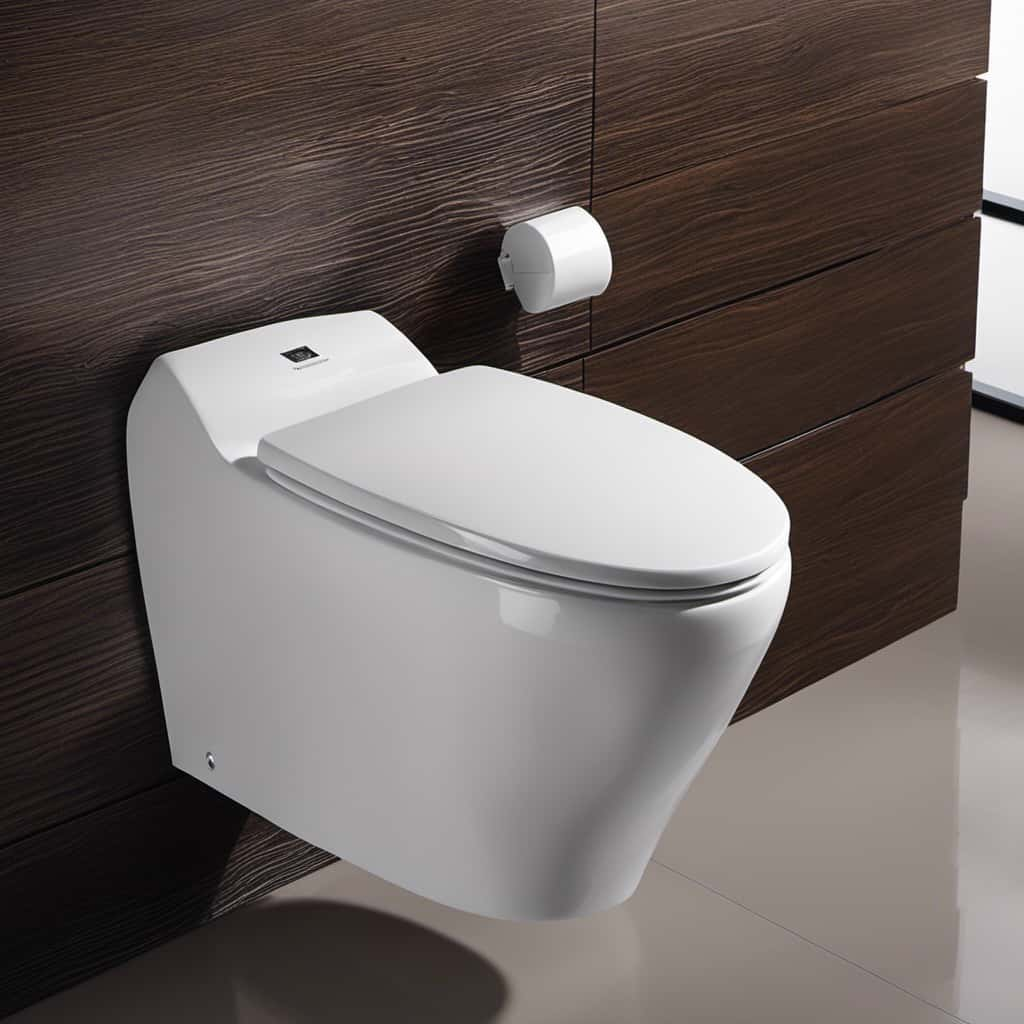
Step-By-Step Guide to Flushing a Toilet
We start by pressing the appropriate button or lever to initiate the flushing process in an Italian toilet. The location of the flush button or lever may vary depending on the design of the toilet. Once pressed, the flushing mechanism activates, releasing a powerful stream of water into the bowl. This water flow helps to remove waste and cleanse the toilet bowl. To ensure effective toilet cleaning and water conservation, it is important to use the appropriate amount of water for each flush. Some toilets may have dual-flush systems, offering a choice between a partial flush for liquid waste and a full flush for solid waste. This option allows for greater water conservation by using less water for liquid waste disposal. Here is a step-by-step guide to flushing a toilet in Italy:
| Step | Action |
|---|---|
| 1 | Locate the flush button or lever |
| 2 | Press the button or push the lever |
| 3 | Allow the flushing mechanism to activate |
| 4 | Ensure effective toilet cleaning and water conservation by using the appropriate amount of water for each flush |
| 5 | Consider using the dual-flush option, if available, for greater water conservation |
Common Mistakes to Avoid When Flushing
One mistake to avoid when flushing a toilet in Italy is failing to ensure proper water conservation by using excessive amounts of water. It’s important to follow toilet flushing etiquette to prevent unnecessary wastage.
Here are three common flushing mistakes to avoid:
- Flushing unnecessary items: Don’t flush items such as sanitary napkins, wipes, or cigarette butts, as they can clog the toilet and cause plumbing issues.
- Overloading the toilet: Avoid flushing large amounts of toilet paper or excessive waste at once, as it may lead to clogging and require professional assistance to fix.
- Ignoring flushing problems: If you notice a weak flush, slow drainage, or frequent clogs, don’t ignore these signs. Troubleshoot common flushing problems promptly to prevent further issues and costly repairs.
Tips for Using Public Restrooms in Italy
When using public restrooms in Italy, it’s important to consider the cleanliness and availability of necessary amenities. Italy has its own cultural differences in bathroom etiquette that visitors should be aware of.
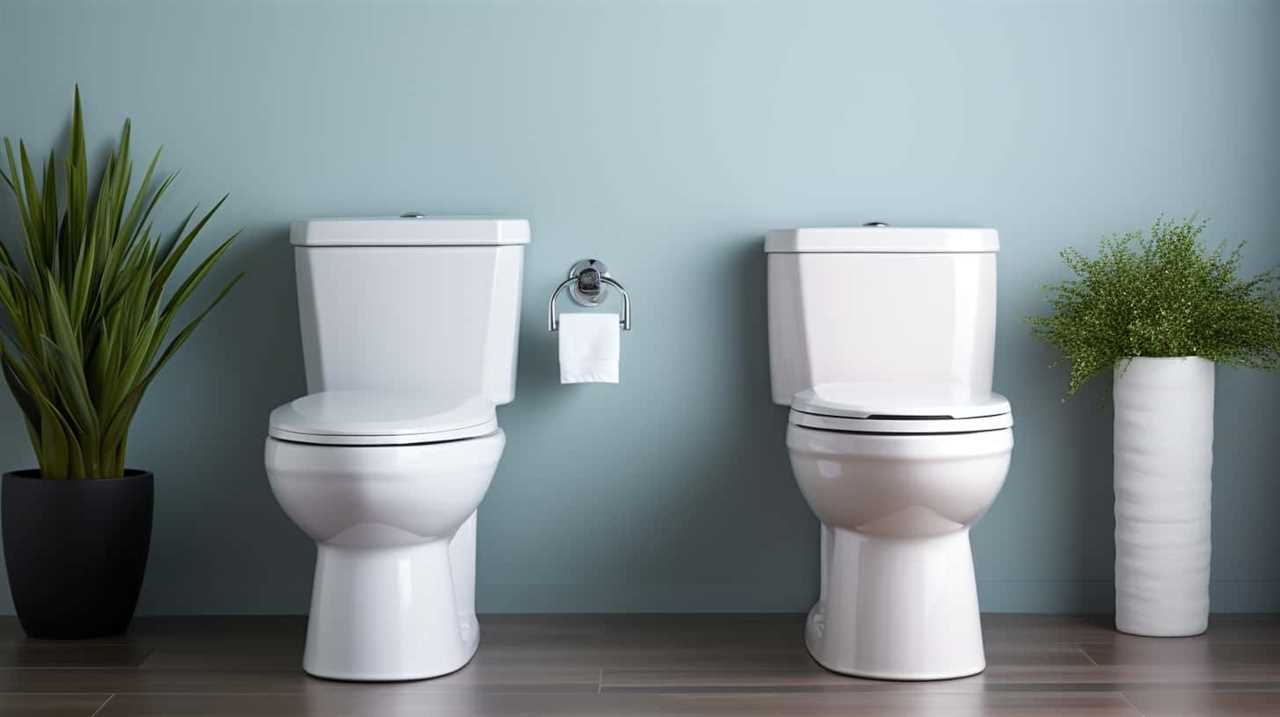
To ensure a pleasant and hygienic experience, here are some tips for finding clean public restrooms in Italy:
- Look for establishments like cafes, restaurants, or hotels, as they usually have better-maintained facilities.
- Carry tissues or toilet paper with you, as some public restrooms may not provide them.
- Be prepared to pay a small fee to use certain public restrooms, especially in busy tourist areas.
- Avoid using public restrooms in train stations or other high-traffic areas, as they tend to be less clean.
Frequently Asked Questions
Are Bidets Commonly Found in Italian Toilets?
Bidets are commonly found in Italian households. They are used for personal hygiene after using the toilet. Bidet usage varies in different regions of Italy, but it is a common fixture in most homes.
What Do the Different Symbols on the Flushing Buttons or Levers Mean?
Different symbols on flushing buttons or levers in Italian toilets indicate various types of flushing mechanisms. Common misconceptions about these symbols can lead to confusion. It is important to understand their meanings for proper operation.
Is It Necessary to Hold Down the Flushing Mechanism for a Longer Time in Italy?
We found that in Italy, it is not necessary to hold down the flushing mechanism for a longer time. However, it’s important to note that certain toilets may have different flushing durations to conserve water.

Are There Any Specific Times When Flushing the Toilet Should Be Avoided in Italy?
There are specific times in Italy when flushing the toilet should be avoided to conserve water. It is important to be mindful of water usage and only flush when necessary, especially during periods of drought or water scarcity.
What Are Some Cultural Etiquettes to Keep in Mind When Using Public Restrooms in Italy?
What cultural etiquettes should we keep in mind when using public restrooms in Italy? In Italian culture, bathroom cleanliness is highly valued. It’s important to properly dispose of toilet paper in the designated bins provided.
Conclusion
In conclusion, mastering the art of flushing a toilet in Italy is like unlocking a hidden treasure. With various types of toilets and unique flushing mechanisms, it’s essential to understand the intricacies involved.
By following our step-by-step guide and avoiding common mistakes, you’ll navigate the waters smoothly. Whether you’re in a public restroom or your own private oasis, these tips will ensure a seamless experience.
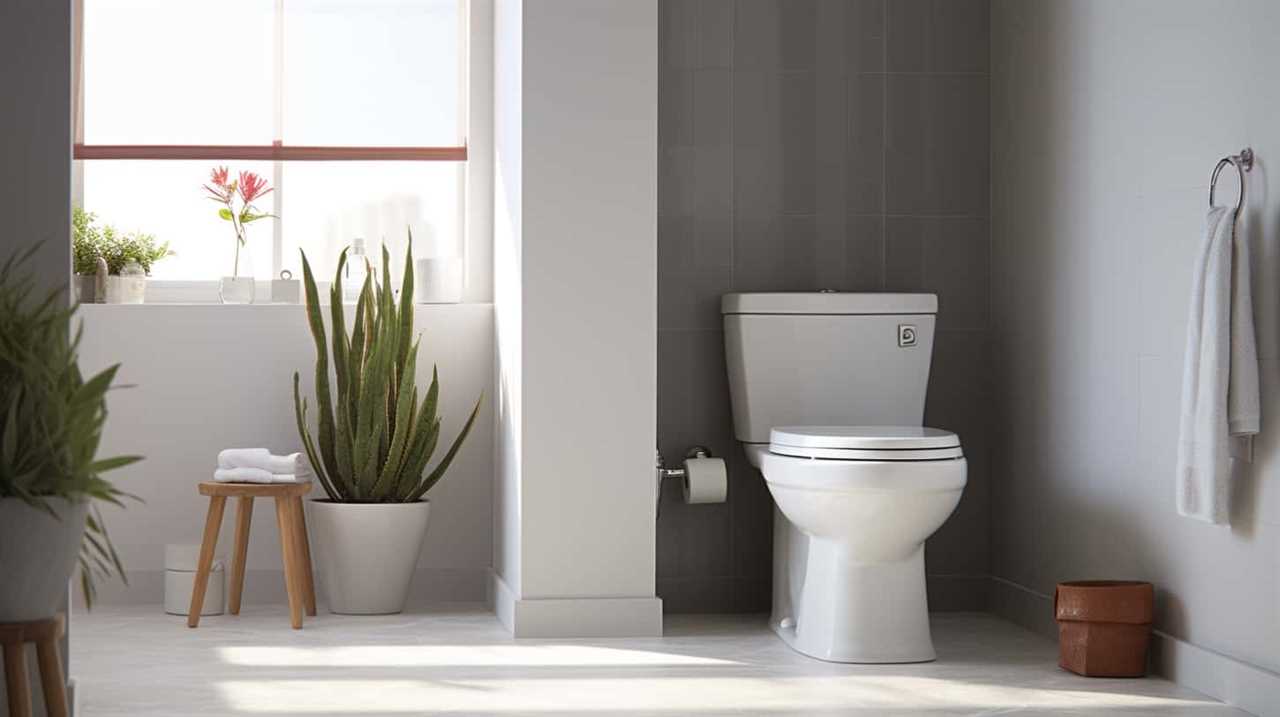
Embrace the challenge and conquer the flushing game with finesse.
With an impeccable eye for detail and a passion for bathroom-related, Ava leads our editorial team gracefully and precisely.
Under her guidance, Best Modern Toilet has flourished as the go-to resource for modern bathroom enthusiasts. In her free time, you might find Ava exploring antique shops and looking for vintage bathroom fixtures to add to her collection.
FAQ - Advanced Bathroom Queries
Best Toilet Brand

We have thoroughly searched the market to discover the top toilet brands for you. Whether it’s American Standard, Kohler, Toto, Delta, or Gerber, we have all the insider details you require.
Picture this: a bathroom oasis, where every flush is powerful, every seat is comfortable, and every fixture is reliable. Our expertise and unbiased research have led us to these top contenders.
Get ready to elevate your bathroom experience with the best toilet brand on the market.
Key Takeaways
- American Standard offers a wide range of options for residential and commercial use, while Gerber offers a wide range of models to cater to different needs and preferences.
- Gerber toilets are known for their reliability and durability, with minimal maintenance and repairs needed, while American Standard focuses on advanced flushing technology for efficient water usage.
- Gerber toilets are praised for their water efficiency and are certified by WaterSense for their water-saving capabilities, while American Standard is known for its innovative technologies like EverClean and WaterSense certification.
- Gerber toilets are generally more affordable compared to American Standard, and customers have praised Gerber toilets for their excellent performance and value for money.
American Standard
In our opinion, American Standard is the top choice for a reliable and high-quality toilet brand. When comparing American Standard’s toilet models for residential and commercial use, it’s clear that they offer a wide range of options to suit different needs.

For residential use, American Standard provides toilets with advanced flushing technology that ensures efficient water usage without compromising on performance. These models also come in various designs and sizes to fit any bathroom aesthetic.
On the other hand, American Standard’s commercial toilet models are specifically engineered to withstand heavy usage and have features like powerful flushes and easy maintenance. This demonstrates the brand’s commitment to providing durable and efficient solutions for both residential and commercial settings.
With a history spanning over 140 years, American Standard has continuously innovated in the toilet industry. They’ve introduced groundbreaking technologies such as EverClean, a surface that inhibits the growth of bacteria, mold, and mildew. This not only ensures a cleaner and more hygienic toilet but also reduces the need for frequent cleaning.
American Standard has also been at the forefront of water conservation efforts by developing toilets with WaterSense certification, which means they meet strict efficiency standards. This dedication to sustainability and innovation has solidified American Standard’s position as a leader in the toilet industry.

Kohler
When it comes to a reliable and high-quality toilet brand, Kohler stands out with its impressive range of models for residential and commercial use. Kohler toilets are known for their innovative features and superior performance.
Here are some key features that make Kohler toilets a popular choice among consumers:
- Efficient flushing system: Kohler toilets are equipped with powerful flushing mechanisms that ensure effective waste removal, preventing clogs and reducing water usage.
- Comfort height: Many Kohler models feature a comfort height design, which offers a chair-like seating position for added comfort and ease of use.
- Dual-flush technology: Some Kohler toilets come with dual-flush options, allowing users to choose between a full flush for solid waste and a partial flush for liquid waste, resulting in water savings.
- Easy installation: Kohler toilets are designed for easy installation, with clear instructions and user-friendly features that simplify the process.
- Wide range of pricing options: Kohler offers a variety of toilet models at different price points, making it possible to find a suitable option for every budget.
Whether you’re looking for efficiency, comfort, or affordability, Kohler toilets have a model to meet your needs.
Toto
Let’s now shift our focus to Toto, another leading toilet brand that offers exceptional features and performance. When comparing Toto to American Standard, Toto often comes out on top in terms of innovative technology and water efficiency.

Toto toilets incorporate advanced flushing systems like the Tornado Flush, which uses centrifugal force to create a powerful and efficient flush. In terms of design, Toto offers a wide range of styles and finishes to suit any bathroom decor.
When comparing Toto to Kohler, both brands are known for their quality and reliability. However, Toto is often praised for its superior flushing performance and water-saving features. With Toto, you can expect a toilet that not only looks great but also delivers exceptional performance.
Now, let’s move on to the next section and discuss the brand Delta.
Delta
We’ve found three major factors that make Delta a top toilet brand.
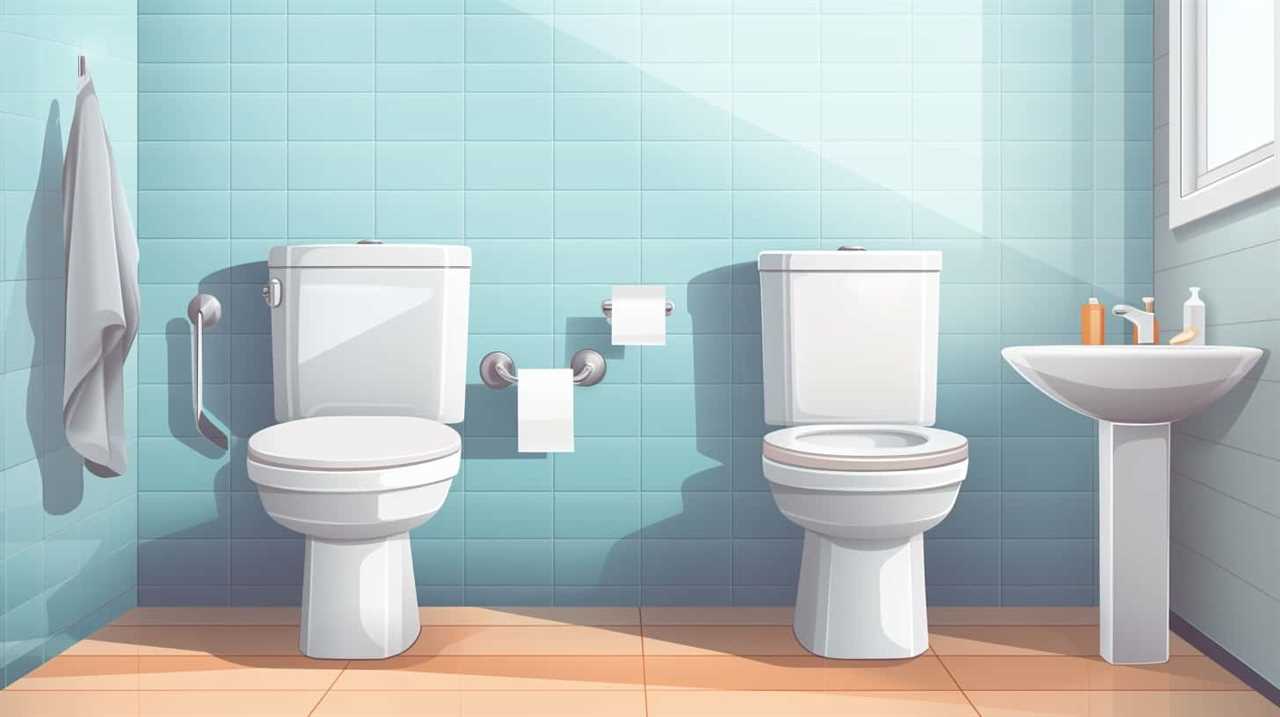
- Delta toilets are known for their exceptional durability and reliability. The materials used in their construction are of high quality, ensuring a long-lasting product.
- Delta toilets offer innovative features that enhance the user experience. From efficient flushing systems to easy-to-clean designs, Delta toilets are designed with the user in mind.
- Delta toilets are backed by a strong warranty and excellent customer support. This ensures that any issues or concerns are addressed promptly and efficiently.
When comparing Delta to other brands, it’s clear that Delta stands out in terms of quality, innovation, and customer satisfaction. Their toilets consistently outperform competitors in terms of durability and functionality.
With its superior features and outstanding performance, Delta proves to be a top choice for those seeking a reliable and high-quality toilet.
Now, let’s move on to discuss another top toilet brand: Gerber.
Gerber
Moving on to Gerber, another top toilet brand, we find that they offer their own unique set of features and qualities. Gerber toilets are known for their reliability, durability, and water efficiency. They have a wide range of models that cater to different needs and preferences. To provide a comprehensive understanding of Gerber toilets, let’s compare them to American Standard, one of their main competitors.

Below is a table that highlights the key differences between Gerber and American Standard toilets:
| Gerber | American Standard |
|---|---|
| Strong flush power | Powerful flush system |
| Water-saving technology | Efficient water usage |
| Affordable pricing | Higher price range |
Based on gerber toilet reviews, customers have praised Gerber toilets for their excellent performance and value for money. However, when comparing Gerber vs American Standard, it ultimately comes down to personal preference and specific requirements. Both brands have their own strengths and can be trusted for their quality craftsmanship.
Frequently Asked Questions
What Is the Average Lifespan of a Toilet Manufactured by American Standard?
On average, the lifespan of an American Standard toilet is around 15 to 20 years. To maximize its longevity, regular maintenance is crucial. Here are some tips: keep it clean, avoid using harsh chemicals, and promptly fix any leaks.
Does Kohler Offer Any Eco-Friendly or Water-Saving Toilet Models?
Yes, Kohler offers a range of eco-friendly and water-saving toilet models. They have innovative options that help conserve water while still providing efficient flushing capabilities. These toilets are a great choice for those looking to reduce their environmental impact.
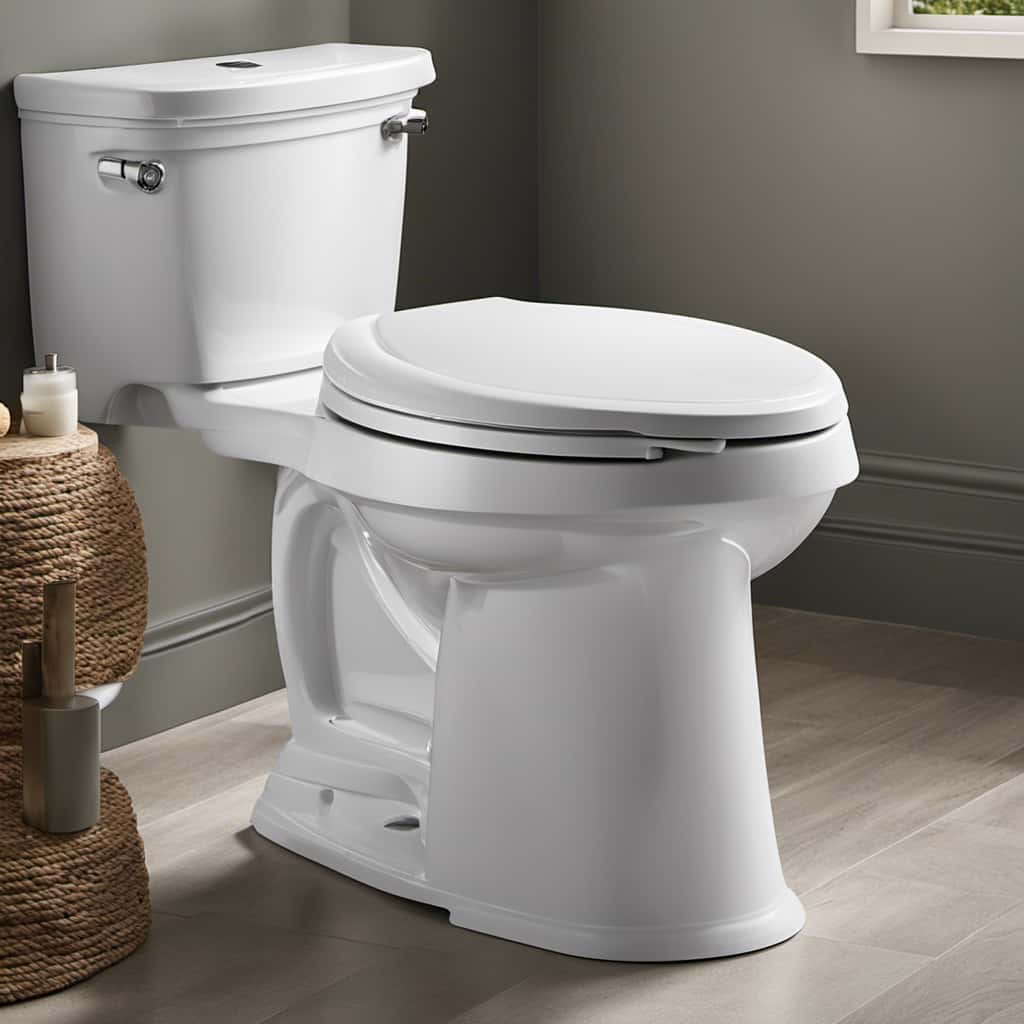
Are Toto Toilets Suitable for Small Bathrooms With Limited Space?
Toto toilets are suitable for small bathrooms with limited space due to their compact dimensions and space-saving options. They offer a range of toilet models designed specifically for maximizing space while maintaining functionality and comfort.
Can Delta Toilets Be Easily Installed by Homeowners Without Professional Assistance?
Delta toilets can be easily installed by homeowners without professional assistance. However, it is important to follow the Delta toilet installation guide and consider the pros and cons of DIY toilet installation.
What Is the Warranty Period Offered by Gerber for Their Toilet Products?
The warranty period offered by Gerber for their toilet products and customer reviews are important factors to consider when determining the quality and reliability of their toilets.
Conclusion
In conclusion, when it comes to choosing the best toilet brand, American Standard, Kohler, Toto, Delta, and Gerber stand out as top contenders.

Like a symphony of efficiency, these brands harmonize quality, durability, and innovation, ensuring a seamless bathroom experience.
Whether you seek sleek aesthetics, water-saving features, or reliable flushing power, these brands have got you covered.
So, go ahead, take the plunge and elevate your bathroom to new heights with a toilet from one of these trusted manufacturers.
With an impeccable eye for detail and a passion for bathroom-related, Ava leads our editorial team gracefully and precisely.
Under her guidance, Best Modern Toilet has flourished as the go-to resource for modern bathroom enthusiasts. In her free time, you might find Ava exploring antique shops and looking for vintage bathroom fixtures to add to her collection.
-

 Bathroom Enhancements2 months ago
Bathroom Enhancements2 months agoWill Hot Bath Lower Blood Pressure
-

 FAQ - Advanced Bathroom Queries3 months ago
FAQ - Advanced Bathroom Queries3 months agoWhich Countries Use Bidets the Most
-

 Reviews1 month ago
Reviews1 month agoLDian Smart Toilet Review [2024]
-

 Reviews2 months ago
Reviews2 months agoKohler Innate Smart Toilet Review [2024]
-

 Reviews2 months ago
Reviews2 months agoKohler NUMI 2.0 Smart Toilet Review [2024]
-

 Reviews2 months ago
Reviews2 months agoCANEST Smart Toilet Review: The Ultimate Bathroom Upgrade [2024]
-

 Toilet Types3 months ago
Toilet Types3 months agoAre Bleach Tablets Bad for Your Toilet
-

 Reviews2 months ago
Reviews2 months agoWoodbridge B0970S Smart Bidet Toilet Review [2024]






















